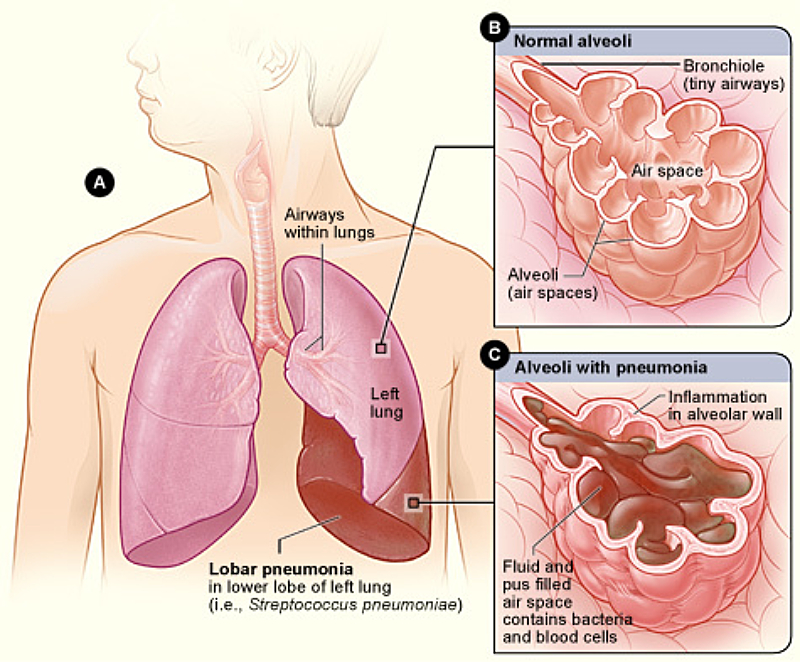Pneumonia is a bacterial or viral infection of the lungs. In children, especially young children, viral pneumonia is more common. Pneumonia causes fever, chills, shortness of breath, coughing and chest pain. It causes inflammation of the air sacs in one or both lungs.

Illustration courtesy of tabletsmanual.com
It is most commonly caused by one of the viruses or bacteria present in the air we breathe. Usually the bodies immune system is able to fight off these germs. But sometimes the immune system is overwhelmed, such as during a cold or a bout of the flu. When infection sets in, the air sacs in one or both lungs fills with pus and fluids, making breathing difficult.
Most children make a full recovery in a couple of weeks, but some need specialised treatment for complications.
Pneumonia can be caused by many types of germs, including:
The most common symptoms of pneumonia include:
See your doctor if you have an ongoing chest infection that is not getting better. If your child develops a chest infection after a cold or the flu see your doctor straight away; children can become very sick very quickly if they develop pneumonia.
Seek medical assistance straight away if a bluish tinge develops in the skin, lips and nail beds. This is a sign that the lungs are unable to deliver enough oxygen to the body.
To diagnose pneumonia your doctor will take a medical history and do a physical exam. Pneumonia may be suspected if they hear coarse breathing, wheezing or crackling sounds when listening to the chest through a stethoscope. To confirm a diagnosis of pneumonia a chest x-ray may be required to see which part of the lungs are affected. Blood tests and samples of fluid from the lungs may also be sent to the lab for testing.
Source: Health Navigator New Zealand